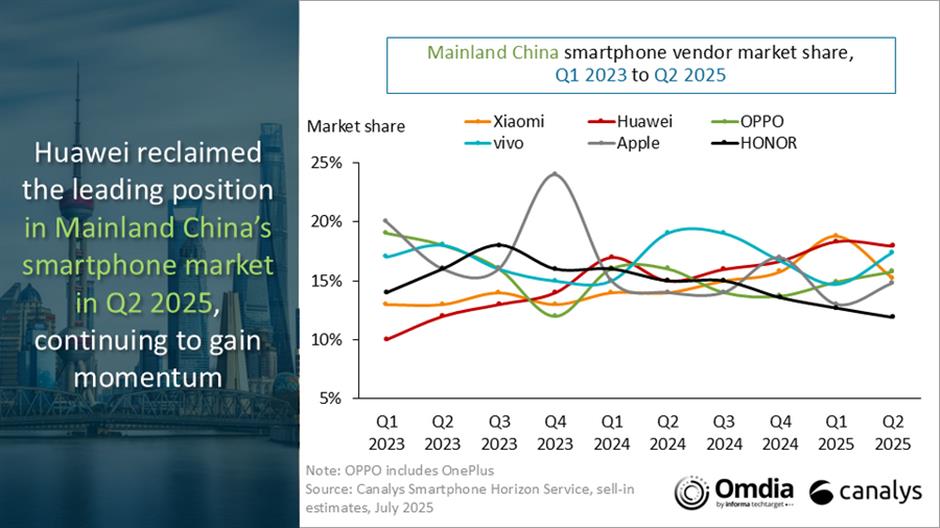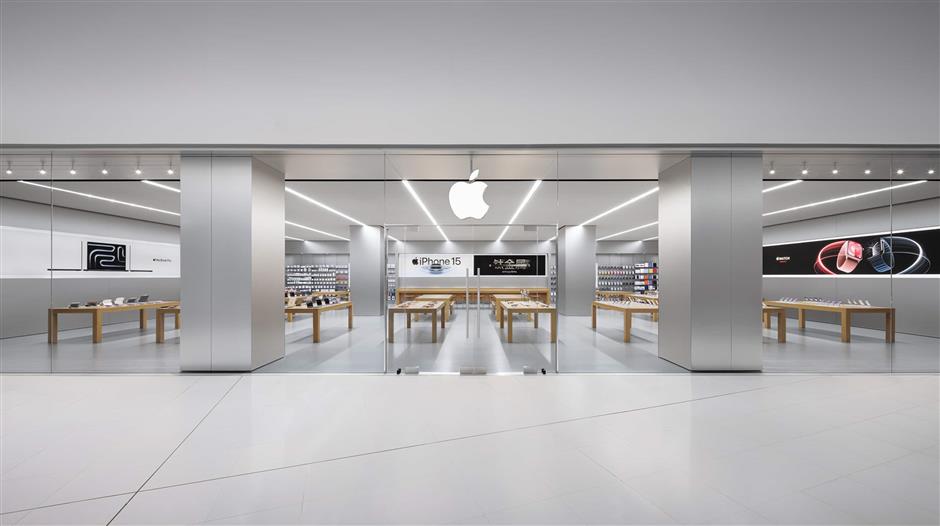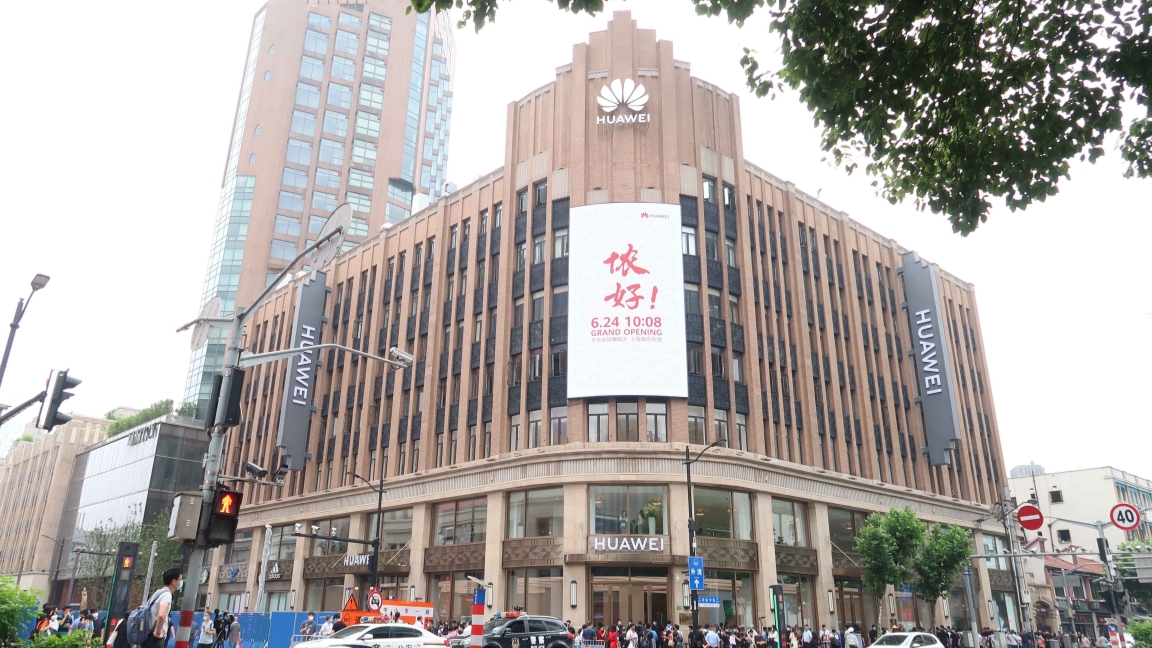

Huawei released its latest Pura series smartphones in Shanghai in June.
China's Huawei reclaimed its position as the leading smartphone brand in the domestic market in the second quarter, according to a new report from research firm Canalys. Meanwhile, Apple maintained its No. 5 ranking, posting a slight increase in sales within the competitive market.
The Chinese mainland smartphone market saw an overall decline of 4 percent year-on-year in the second quarter, as the impetus from national subsidy programs introduced earlier in the year began to wane. Despite the broader market dip, Huawei shipped an impressive 12.2 million units, securing an 18 percent market share compared with 15 percent a year ago, Canalys data revealed.
"Huawei launched the Nova 14 series, its first Nova lineup to feature HarmonyOS 5.0," noted Lucas Zhong, an analyst at Canalys. "This move is expected to accelerate the expansion of its independent ecosystem's user base, while also placing greater demand on system compatibility and user experience."

The top five brands in China in the second quarter were: Huawei, Vivo, Xiaomi, OPPO and Apple, respectively.
Other top vendors in the second quarter included Vivo, Xiaomi and OPPO. Apple ranked fifth, selling 10.1 million units in the quarter, a modest increase from 9.7 million units sold a year ago. Canalys reported that Apple strategically adjusted pricing for its new iPhone 16 series to stimulate demand during the shopping season. However, its initial momentum was reportedly hindered by issues related to national subsidy eligibility, likely due to its higher price points.
Meanwhile, in a rare move, Apple is set to close one of its two retail stores in Dalian, a coastal city in northeastern Liaoning Province, from August 10. This marks the first time the United States tech giant will have shuttered a retail location on the Chinese mainland since opening its inaugural outlet in the country in 2008. Apple China did not respond to requests for comment on the matter on Tuesday.

The Dalian Apple Store, which will stop operations from August 10. – photo from Apple's website.

